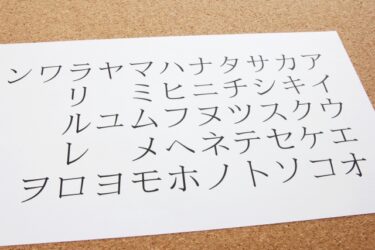If you live in Japan, you may have noticed that the academic and fiscal year starts in April, not in September, as is common in many other countries. This unique system raises several questions: Why does Japan follow an April-to-March cycle? How was this decision made, and why hasn’t Japan adopted the global standard of a September start? There have even been discussions about switching to a September start in recent years, especially during the COVID-19 pandemic, but nothing changed. Let’s explore the reasons behind Japan’s April start, its historical roots, and why it remains in place today.
- 1 1. Historical Roots of Japan’s April Start
- 2 2. School Year and Birthdays: Why March Babies Share a Class with April Babies
- 3 3. The Debate Over September Start: Why Didn’t It Change?
- 4 4. Is Japan the Only Country with an April Start?
- 5 5. Which Schools and Companies Use the September Start?
- 6 6. Conclusion:
1. Historical Roots of Japan’s April Start
Japan’s practice of starting both the academic and fiscal year in April dates back to the Meiji era (1868–1912). When Japan began modernizing and adopting Western systems, the government set April 1 as the start of its fiscal year, likely influenced by agricultural cycles, which align with Japan’s spring planting season. Since the economy and education are closely linked, schools followed suit, starting their academic year in April as well. This timing allowed for an easier transition for students graduating and entering the workforce.
The decision was likely a practical one at the time. Spring, symbolizing renewal, is a fitting time for new beginnings. Cherry blossoms blooming across the country make the start of the school year in April particularly iconic in Japan. Over time, this became an ingrained part of the cultural fabric.
2. School Year and Birthdays: Why March Babies Share a Class with April Babies
Another interesting aspect of Japan’s April start is how it determines school grades. Children born between April 2 and the following April 1 are placed in the same grade. This means that a child born on April 2 will be in the same class as a child born on March 31 of the next year, leading to a nearly one-year age difference between classmates.
The decision to use this time frame is linked to Japan’s April fiscal year, but it also has significant implications for students’ development. Older students may have an academic or physical advantage over younger classmates, which has been a topic of discussion in educational circles. Despite this, the system has persisted because of its alignment with the fiscal and social structure.
3. The Debate Over September Start: Why Didn’t It Change?
During the COVID-19 pandemic, many voices, including politicians and education experts, advocated for shifting the academic year to start in September, in line with many other countries. The proposal gained traction as schools faced disruptions due to the virus, and a September start seemed like a reasonable way to reset the system.
However, the proposal faced numerous obstacles. One major challenge was the significant restructuring required, not just for schools but for businesses, government agencies, and even social events like entrance ceremonies and job recruiting seasons. Japan’s social systems are deeply rooted in the April cycle, and changing it would have caused widespread disruptions. The financial costs and logistical complexities were deemed too high, and ultimately, the idea was abandoned.
4. Is Japan the Only Country with an April Start?
Interestingly, Japan is not the only country where the academic or fiscal year starts in April. Countries like India and Nepal also start their school years around this time. However, Japan remains an outlier compared to most of the world, where September is the common starting point.
While some argue that Japan should align with the global standard, others believe that the current system works well for the country’s specific needs. The cherry blossoms, the symbolism of spring renewal, and the long-standing tradition are compelling reasons to keep things as they are.
5. Which Schools and Companies Use the September Start?
Some universities and international schools in Japan have adopted the September start to align with the global academic calendar. For example, some higher education institutions that have a strong focus on international exchange or partnerships with foreign universities may opt for a September start to make it easier for students to study abroad or for international students to enroll. This alignment helps students participate in programs overseas without the issue of mismatched academic schedules.
Likewise, some companies, particularly multinational corporations or companies that heavily engage in international business, may offer a September entry for new employees. This allows them to recruit talent from overseas or align their hiring practices with international business cycles.
Do Any Schools or Companies Adopt Both April and September Starts?
Yes, a small number of universities and companies in Japan adopt both April and September starts. These institutions offer flexibility to accommodate both domestic and international students or employees. For example, some universities may offer two admission periods: one in April for local students and another in September for international students. Similarly, companies might have both April and September hiring periods to accommodate the schedules of Japanese graduates as well as foreign talent.
In summary, while the April start remains the norm in Japan, the September start is becoming more common in globalized institutions and businesses. However, given the country’s strong ties to tradition, the widespread adoption of the September start remains limited to specific cases where international collaboration or alignment is necessary.
6. Conclusion:
Japan’s April start is deeply rooted in its history, culture, and social structure. While the idea of switching to a September start gained attention during the pandemic, the practical challenges of such a change outweighed the potential benefits. Japan’s unique system may differ from much of the world, but it continues to serve the country’s specific rhythms and traditions well. Whether or not it should change is a topic that remains up for debate, but for now, the cherry blossoms will continue to mark the beginning of the school year.







